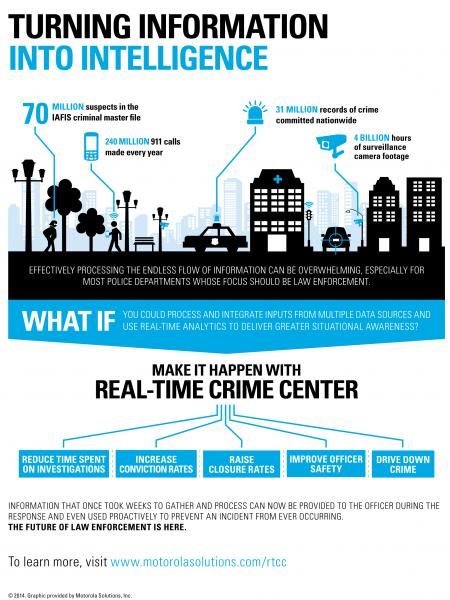Data, Data Everywhere… Making it operational in real time, in 2014 and beyond
What is in this article?
Data, Data Everywhere… Making it operational in real time, in 2014 and beyond
By David Thomas
Data is coming at your agency from all angles. Video cameras, databases, social media, sensors, alarms and all the other myriad of information available to you is giving you all the data you could ever imagine. A recent statistic: 2.5 quintillion bytes of data is created every day and 90% of all data in the world today was created in the last two years. Yet data is only as good as how it can be used. A recent Gartner study showed 56% of respondents are struggling with how to get value from their data. How do you operationalize all of this information that surrounds you?
 Police departments across the globe are seeking smarter ways to capture, correlate and share all this information—and, more importantly, turn it into usable and actionable intelligence. Rather than relying on dispersed databases and paper reports that never seem to be there when you need them, real-time technology is helping law enforcement find a wealth of integrated information with just a few clicks. Instead of spending days or weeks combing through files, police can access the information they need instantly at the moment they need it.
Police departments across the globe are seeking smarter ways to capture, correlate and share all this information—and, more importantly, turn it into usable and actionable intelligence. Rather than relying on dispersed databases and paper reports that never seem to be there when you need them, real-time technology is helping law enforcement find a wealth of integrated information with just a few clicks. Instead of spending days or weeks combing through files, police can access the information they need instantly at the moment they need it.
Many public-safety agencies have begun investing in real-time crime centers to help put all this data to work for them. A real-time crime center can integrate complex—and often disparate—data elements into one unified, operational view through the aggregation of records, video and other data sources while making it available in real time. It ties these data elements to existing computer-aided dispatch (CAD) and mission-critical radio networks to transform the information into on-demand, actionable intelligence for law-enforcement officers.
What’s more, advanced sensor networks are able to contribute by anticipating crowd formations, detecting gunshots and delivering other types of valuable intelligence. Analytics integrate this intelligence with an agency’s existing records and databases—from parole information to national crime records to court records and evidence management. Now, when a crowd forms in a high-crime area or a gun is fired in a sprawling city park, analytics equip police with the relevant intelligence they need to be more proactive.










